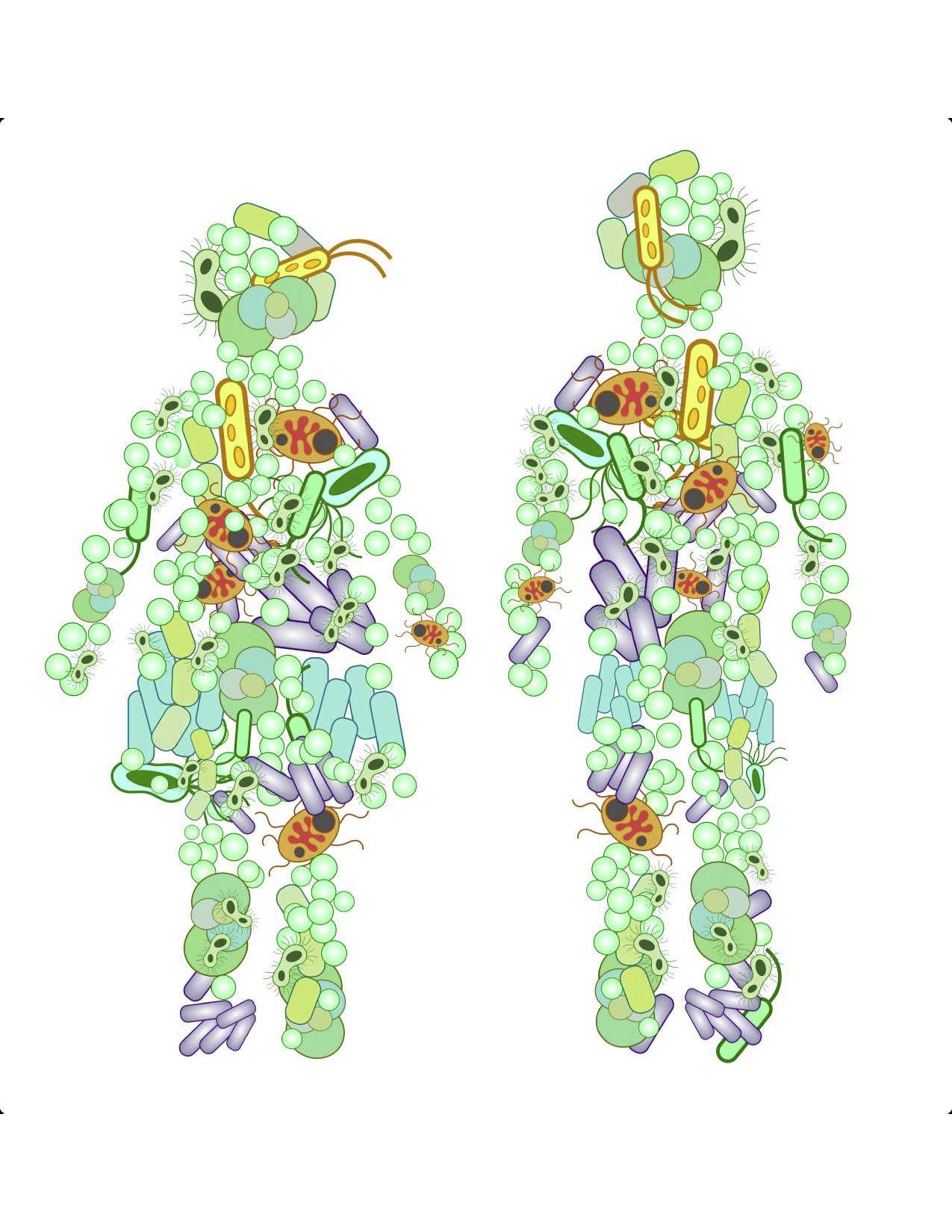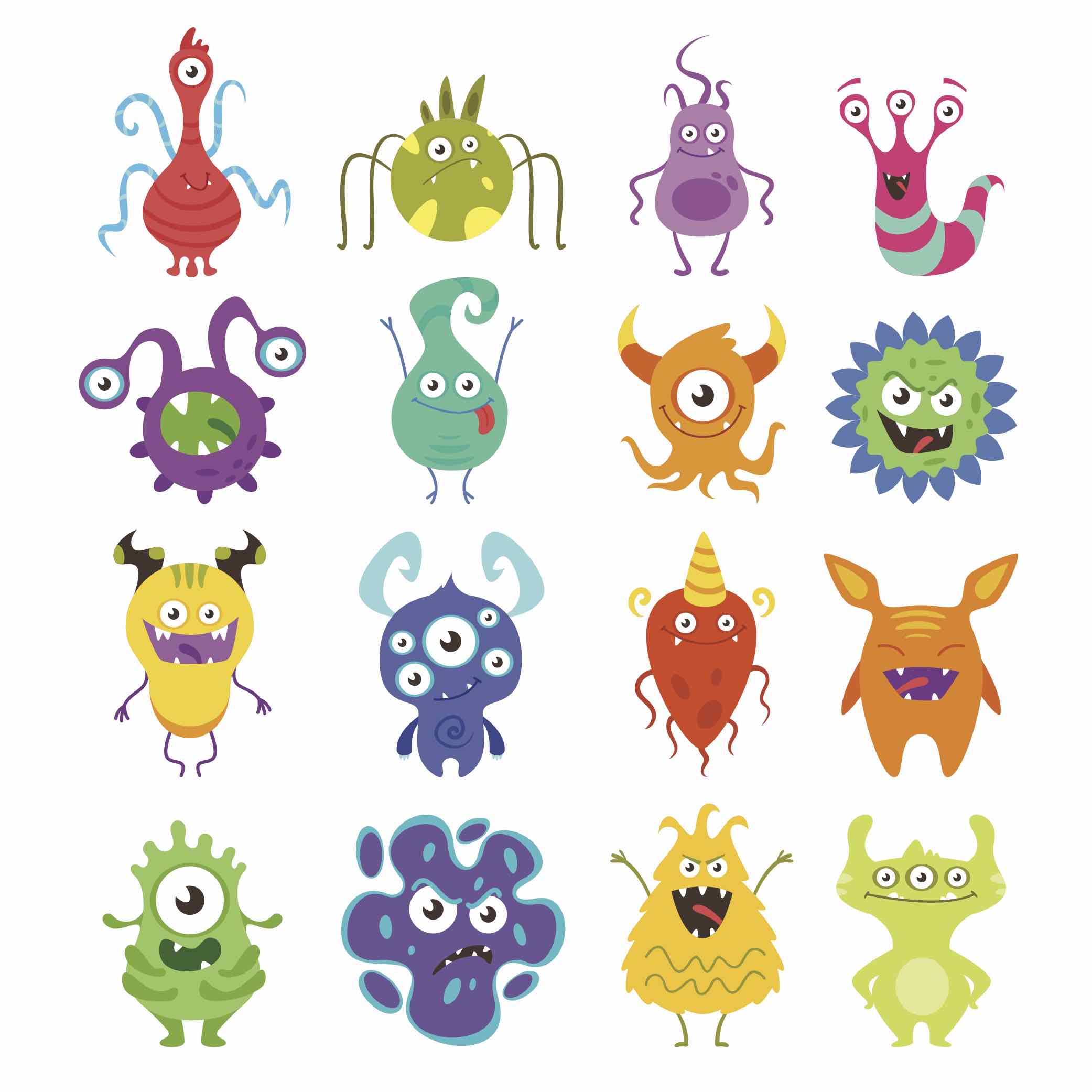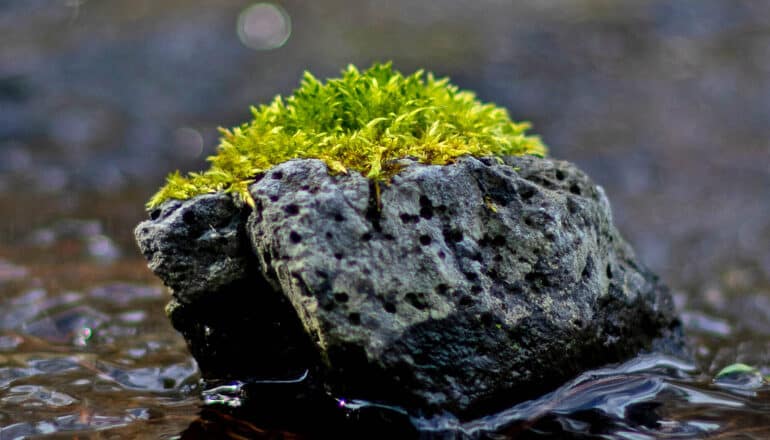The biology, as astonishing as it is, does not tell us what it will mean. -Stephan Helmreich, “Homo Microbis” (2014, 4)
Within microbiome research, the human body can be recast as a host of microbial ecologies, a “supraorganism” or “holobiont.” From this comes new ways of understanding and treating digestive diseases as well as illnesses associated with brain functioning, like depression and Alzheimer’s. This research reflects the increasing emphasis in the life sciences on “life as process” (Dupre and O’Malley 2007, Dupre 2020), and in the social sciences on the body as “biosocial” (Niehwöhner and Lock 2018). We take up these insights and examine one way that these ontologies of body and environment circulate in public ways by analyzing how the human body is depicted in relation to microbes and environments through public visualizations of the human microbiome.
Despite the fact that the human microbiome is made of up non-humans and should raise questions about human exceptionality, the human microbiome circulates in the media primarily in relation to human health. How to care for health through attending to the human microbiome has become a wellness topic circulating in popular news media, from science journalism to lifestyle and wellness magazines and websites. There are soaps, foods, and food preparation methods that are microbiome-friendly. There are direct-to-consumer tests that will offer personalized, if not precise, nutrition recommendations. There are magazine articles advising readers on how to care and optimize their various microbiomes, from stomach to skin to vagina. How are bodies, microbes, and environments portrayed as the relational entities that they are for public audiences?
We explore two prominent visual themes in the public visualizations of the microbiome. First, the representations of boundaries of the human body in relation to microbial bodies. This means paying attention to how the microbial worlds within, and the environment outside, the body are visually constituted. This is to visually contextualize the ubiquitous headline or textual hook about the human microbiome: that within the human body, microbial cells outnumber human cells. The scale of difference has oscillated as research accumulates and has ranged from estimates of a ratio of 100 microbial cells to 1 human cell, to 10:1 to 3:1, and most recently resting closer to a ratio of 1.3:1 (Saey 2016). Second, we consider how differences (racial, gendered, in physical ability/fitness) were represented. Our focus on public media follows Adele Clarke’s analysis of the role of the media in the assemblages of “healthscapes” (2010, 105-06) and shows how the microbiome becomes part of expansive processes of biomedicalization (Clarke et al 2010) that normalize directions of health care and individual responsibility. The media is not only central to the proliferation of concepts of health, but also generates and reproduces expectations of how the world should work in regard to health (Briggs and Hallin 2016).
We argue that the visualizations of the microbiome in the popular media depict it as a friendly frontier within the bounded human body. Through pictures and the news article headlines that accompany them, the human microbiome is presented as having silently cared for the body until its potential was recently discovered by scientists. This depiction suggests that the human body’s health is the purpose of the microbiome itself and of scientific research into its mechanisms. The human body, with the guidance of experts, becomes a site in which one can attune themselves to their microbiome’s unique composition through experiments in diet, skin care, nutritional supplements, and nutraceuticals. Ultimately, the microbiome becomes another part of the human body that can be known through biomedicine with the ends of optimizing human health. As such, we are critical of the science communication but also see it as embedded in social and political processes that exceed it, meaning that the future for more-than-human flourishing that some narratives of microbiome science hope for will take a great deal of work to realize in a world of the financialization of microbial life.
Our visual discourse analysis is based on publicly circulating images we compiled from online news articles about the human microbiome. In so doing, we aimed to capture a part of the microbiome’s place in the contemporary healthscape. Our database spans across all forms of online news, from traditional to specialist, reflecting the accessibility of media in the current age. We collected these articles by following Google Alerts set up to catch the keywords “microbiome” and “direct-to-consumer microbiome test.” We have focused our visual analysis on images featured in articles for a generalized audience—like a health news site detailing steps readers can take in their daily lives to improve their health—rather than those speaking to experts—like a health news site informing practitioners about new treatments and developments in the field. We compiled this data in the fall of 2019, from September 7th, 2019 to January 20th, 2020, unknowingly doing so just before the COVID-19 pandemic began and people the world over were compelled to be aware of a new microbe harmful to human health. Throughout this article, we focus in-depth on several images which reflect or contest the makeup of our larger collection of 152 images.
With few exceptions, the human bodies portrayed in these articles are all white, able-bodied, and fit (Figure 1). The link between fitness and the human microbiome is strongly emphasized in the media, visually and textually, echoing the portrayal of able-bodiedness and weight loss as ideals by direct-to-consumer microbiome tests, as Dryden has also found in gut microbiome therapies (2023). The majority of the photos featuring people show them alone. If not alone, then the images depict humans in a clinical setting of medical professionals or scientists alongside a patient. Very few images feature people together in non-medical settings.

Figure 1: A close up on a white person’s bare torso with hands cradling a slim stomach (Image taken from iStock, Peopleimages)

Figure 2: Illustration of microbes in the shape of two human bodies coded as female and male (Shuttershock, lanatoma)
There are important translations occurring in these images, notably that of scale, a particular challenge for visualizing the connection between humans and their microbiomes as the average human is well over a million times greater in size than a single microbe. Even the width of a single human hair is seventy-five times greater than an average microbe. The relationship between the two across this vast space is visually affirmed by truncating the human body and enlarging the microbes, portraying them as closer in scale. Related images show enlarged microbes that render the silhouette of a human body (Figure 2). Notably, even in this abstracted state, the microbes privilege sexual dimorphism and gender stereotypes: the microbes representing a woman are identifiable as such because they are positioned to imply the wearing of a skirt, much like the dualistic symbols used to denote gender on public washrooms stalls. In contrast to the solitude of the human body among microbes, microbes are always represented in plenty; there is no solitary microbe, only solitary humans.
Of all the images we analyzed, only two showed microbes engaged in activity, and they offer a striking contradiction. One image features two microbes fighting each other, equipped with anachronistic armour and weapons[1]; the other image features three microbes with stick arms and legs meditating harmoniously in a stomach.[2] These images represent differing public metaphors for understanding the microbiome. One is antagonistic, portraying the supposed need to attack and destroy to survive, while the other shows harmony as the desired state and solution. The microbiome is a potential site for human intervention and control in service to one’s health, but it is also a slippery research subject that requires large data sets and whose implications are emergent and nascent, despite what the landscape of wellness products would have consumers believe. The microbiome challenges contemporary health management practices but is still trying to be understood through these practices (Wolf-Meyer 2017).
The microbes in our database images are made friendly by their bright colouring. This makes them approachable, perhaps to counteract their daunting plenitude, association with germs that impede health, and integrality to scatological functions. Only one image of a microbe from our data set was not digitally rendered and colourized; all the others were turned into bright colours. Images of diverse microbiomes used an array of aesthetically pleasing colours to differentiate between the different microbes. This colourizing continues outside of our dataset. For instance, on the front page of APC Microbiome Ireland’s (a research centre at University College Cork) website for World Microbiome Day, microbes are caricatured into bright, grotesquely smiling little monsters reminiscent of the characters from Monsters Inc. or the pill-shaped yellow Minions (similar to Figure 3). This representation maintains the otherness of the microbe to the human—some have only one eye, others have horns, all are oddly shaped—while also bringing the microbe closer to the human—the mere fact that they have eyes, smiling mouths, waving arms, and bipedal legs. The translation between human and microbe is emphasizing commonality and aestheticizing difference in a familiar and palatable way. The microbes are not quite anthropomorphized, but recognized as distinct yet potentially friendly. Microbes—these infinitesimal organisms that have only the most basic similarities to humans—are being translated into human conceptions of what life looks like and how the human can optimize it through proper management and care regimes.

Figure 5: Banner from APC Irelands’ World Microbiome Day (Image taken from Shuttershock, curiosity)
These visual representations of microbes contribute to narratives that strongly associate the microbiome with actively managing human health. Microbiome science also challenges narratives of dangerous microbes as disease causing pathogens to be systematically eradicated. Because the microbe of the microbiome’s ecology challenges such narratives, it is rendered visually relatable and appealing through the methods of representation detailed above. While people are mostly pictured alone in these representations, they are also frequently pictured in clinical settings. The individualism of healthy practices is thus bridged through the figure of the expert, the scientist or doctor.
Penny Ironstone (2019) writes that the human microbiome is associated with a liberatory micropolitics because it potentially challenges biomedical models of health, providing “post-Pasteurian models” (Paxson 2008) or “post-antibiotic futures” (Sariola 2021). But while certain people, such as fermentation specialists (e.g. Hey in press; Widmer 2021), draw on human-microbial relations to critique biomedicine, even capitalism, in favor of new futures, the optimism of new relations between humans and microbes is conveyed slightly differently in biomedical and wellness narratives.
There is an almost unimaginably large amount of microbial life that humans move through in their daily lives, and that moves through humans. Although the microbiome’s promise in the health sciences, and to a lesser extent in the social sciences, circulates with much hope for new experiences of the body and new kinds of politics, the visual depictions to date rather replicate other aspects of biomedicalization: the microbiome is visualized as a scientized entity to be harnessed by the human host to optimize wellness. This is in the scaling translations of microbes to seem closer to human, as well as in the way that microbes are depicted in relation to the boundaries of the human body and not to microbes in surrounding environments, such as soils. This is also in the depiction of friendly microbes that resemble children’s cartoons. The visualizations of the microbes in the service of the human host render the “human microbiome” as something that can become “my microbiome.” This rendering lends itself well to precision wellness possibilities. The visualizations do not disrupt other common naturalizing categories associated with the body: the bodies in the healthscape of the microbiome centre whiteness, able bodies, and heteronormative gender binaries.
The microbiome sciences and the social scientists who engage with them (e.g. Benezra 2020, 2023) hold promise for reimagining the body and illness in ways that might decentre the human. While this work is crucially necessary for grappling with health and social issues of the broader late or post-industrial context, the images of the microbiome in the current biomedicalized healthscape only take us a short way there.
[1] https://www.eurekalert.org/news-releases/569226
[2] https://thevarsity.ca/2019/09/30/the-promise-of-the-human-microbiome-in-cancer-research/
Benezra, Amber. 2020. “Race in the Microbiome.” Science, Technology, & Human Values 45(5): 877–902. https://doi.org/10.1177/0162243920911998.
Benezra, Amber, 2023. Gut Anthro: An Experiment in Thinking with Microbes. Minneapolis: University of Minnesota Press.
Briggs, Charles L., and Daniel C. Hallin. 2016. Making Health Public: How News Coverage Is Remaking Media, Medicine, and Contemporary Life. London: Routledge.
Clarke, Adele. E. 2010. “From the Rise of Medicine to Biomedicalization: U.S. Healthscapes and Iconography, circa 1890–Present.” In Biomedicalization: Technoscience, Health, and Illness in the U.S., edited by Adele E. Clarke, Laura Mamo, Jennifer Ruth Fosket, Jennifer R. Fishman, and Janet K. Shim, 104–146. Durham: Duke University Press.
Clarke, Adele E., Laura Mamo, Jennifer Ruth Fosket, Jennifer R. Fishman, and Janet K. Shim, eds. 2010. Biomedicalization: Technoscience, Health, and Illness in the U.S. Durham: Duke University Press.
Dryden, Jane. 2023. “The Gut Microbiome and the Imperative of Normalcy.” International Journal of Feminist Approaches to Bioethics 16:1, 131-162
Dupré, John, and Maureen A. O’Malley. 2007. “Metagenomics and biological ontology.” Studies in History and Philosophy of Biological and Biomedical Science 38 (4):834–846.
Dupré, John. 2020. “Life as Process.” Epistemology and Philosophy of Science 57 (2):96–113. https://doi.org/10.5840/eps202057224.
Hey, Maya. (in press). “Communicating with the Microbial Other: How the Material Practices of Fermentation Connect Humans and Microbes in Polylogue.” Global Media Journal: Canada Edition.
Ironstone, Penny. 2019. “Me, my self, and the multitude: Microbiopolitics of the human microbiome.” European Journal of Social Theory 22 (3):325–341.
Niehwöhner, Jörg, and Margaret Lock. 2018. “Situating local biologies: Anthropological perspectives on environment/human entanglements.” BioSocieties 13:681–697. https://doi.org/10.1057/s41292-017-0089-5.
Paxson, Heather. 2008. “Post-Pasteurian Cultures: The Microbiopolitics of Raw-Milk Cheese in the United States.” Cultural Anthropology 23 (1):15–47.
Saey, Tina. 2016. “Body’s bacteria don’t outnumber human cells so much after all.” Science News. January 8, 2016. https://www.sciencenews.org/article/bodys-bacteria-dont-outnumber-human-cells-so-much-after-all.
Sariola, Salla. 2021. “Fermentation in Post-antibiotic Words: Tuning in to Sourdough Workshops in Finland.” Current Anthropology 62 (S24):S388–398.
Widmer, Alexandra. 2021. “Positioning Human Microbiome DTC Tests: On the Search for Health, Data and Alternatives Amid the Financialisation of Life.” Medicine, Anthropology, Theory 8(2): online. https://doi.org/10.17157/mat.8.2.5127.
Wolf-Meyer, Matthew J. 2017. “Normal, Regular, and Standard: Scaling the Body through Fecal Microbial Transplants: Normal, Regular, and Standard.” Medical Anthropology Quarterly 31 (3): 297–314. https://doi.org/10.1111/maq.12328.

Microbes are “active engineers” in Earth’s rock-to-life cycle, research shows.
The name “critical zone” may give off 1980s action thriller vibes, but it’s the term scientists use to refer to the area of Earth’s land surface responsible for sustaining life. A relatively small portion of the planetary structure, it spans from the bedrock below groundwater all the way up to the lower atmosphere.
“Think of it as Earth’s skin,” says Jon Chorover, head of the department of environmental science in the University of Arizona College of Agriculture and Life Sciences. “It’s sometimes termed the zone where rock meets life.”
Most people—even geologists—don’t typically think about rock as the foundation of life or the way life may alter rock, but that cuts to the heart of critical zone science, Chorover says.
A relatively new framework for approaching Earth sciences, the critical zone aligns researchers across disciplines to better understand how the delicate web of physical, chemical, and biological processes come together to form Earth’s life-support system.
As a biogeochemist, the whole-system approach is a way of thinking that comes naturally to Chorover, who has spent much of his career working to unravel the ways in which chemical and mineral weathering drives the evolution of everything from the soil microbiome to the carbon cycle.
Together with Qian Fang, a postdoctoral researcher from Peking University in Beijing, Chorover recently published the results of nearly 10 years of data collected at the Santa Catalina-Jemez River Basin Critical Zone Observatory, which spans a gradient of elevation and climates on rock basins in northern New Mexico and Southern Arizona.
Their findings in Nature Communications, according to Chorover, provide a “smoking gun” link between the activities of carbon-consuming microbes and the transformation of rock to life-sustaining soil in the critical zone.
In the past, measuring something like mineral weathering often wasn’t that exciting—imagine researchers breaking off chunks of rock and watching it dissolve in beakers back at the lab. But viewing that process in a natural ecological system is a different story.
At the Santa Catalina-Jemez River Basin Critical Zone Observatory, towers that measure the exchange of water between the forest and atmosphere, soil probes that read the transfer of energy and gases, and a host of other in-environment instrumentation offer scientists a firsthand view of the complex systems within the critical zone.
The site is part of a larger National Science Foundation Critical Zone Observatory program, which unlike traditional brick-and-mortar observatories provides a network of regional ecological environments rigged with scientific instrumentation across the United States.
Temperature, moisture, and gas sensors at the site collect measurements every 15 minutes, and after compiling and correlating the data, “What we found was a strong relationship between the rate at which the rock was weathering to form soil and the activities of the microbiome in the subsurface,” says Chorover, a principal investigator at the Catalina-Jemez observatory.
“Minerals, microorganisms, and organics are among the most important components in Earth’s surface,” Fang says. “They interact with each other constantly to provide all terrestrial life with nutrients, energy, and suitable living environments.”
These minerals in the critical zone are continuously attacked by microorganisms, organic acids, and water, Fang explains. As the minerals break down, microbes in the soil consume the new organic matter and transform it into material that feeds plants and other microorganisms, while releasing carbon dioxide.
Previous studies suggest that microbial decomposition of soil organic matter can be fueled when more “fresh” organics—such as plant matter—are introduced to the soil system. This process is called the “priming effect” by soil scientists. However, the relationship between mineral weathering and microbial priming remains unclear.
“Our study shows, for the first time, how these essential soil processes are coupled, and these two processes continuously influence soil formation, CO2 emission, and global climate,” Fang says. “The linkages may even be associated with long-term elemental cycling and rapid turnover of soil carbon and nutrients on Earth.”
While it is easy to perceive the success of plants and microorganisms as lucky environmental circumstance, Chorover says this study proves even the smallest parts of the critical zone have a substantial role to play.
“It shows that life is not simply a passive passenger on the trajectory of critical zone evolution, but actually an active engineer in determining the direction and path of how the Earth’s skin evolves,” Chorover says.
Source: University of Arizona
The post Microbes engineer rock-to-life cycle appeared first on Futurity.